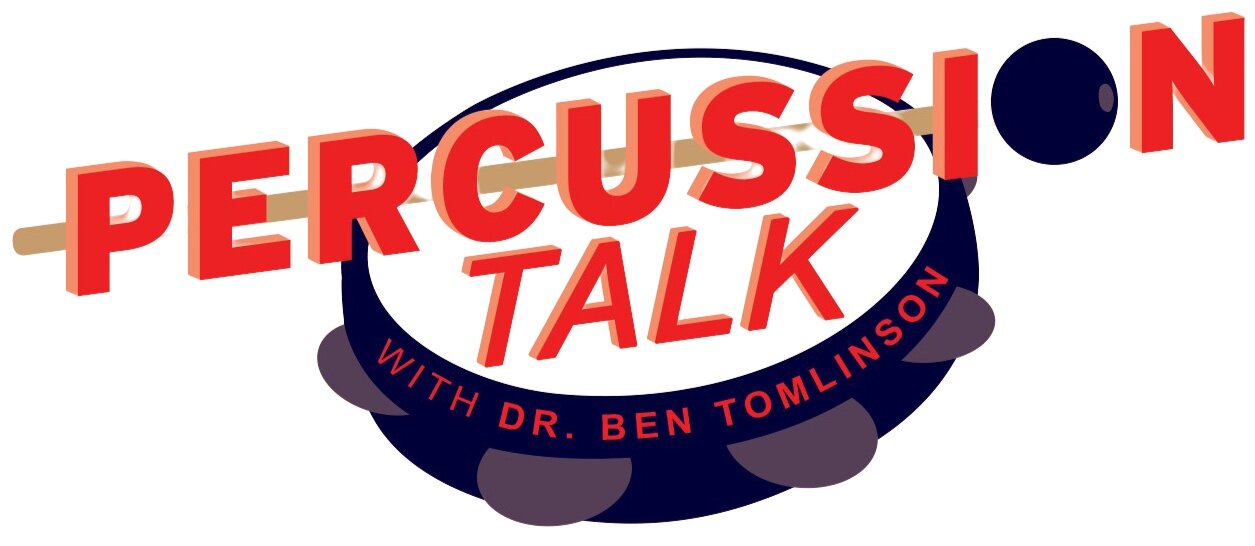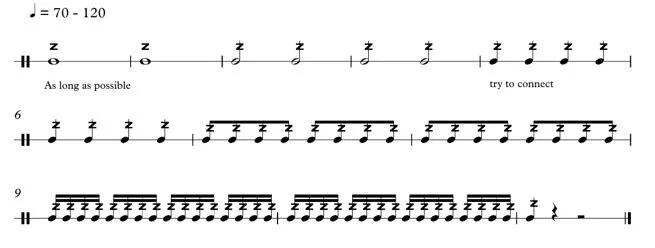Hello friends! I hope everyone is having a great summer. I wrapped up my teaching responsibilities at SFA about a month ago and have been in a flurry of practicing for upcoming recording projects, video editing past projects, and thinking about what future endeavors I want to take on.
This got me thinking about the blog, where it can go this summer, and how to best serve music educators in the classroom when they get back to school in the fall. To that end, I’m starting a new series in Percussion Talk in the months of June and July called Percussion Preparation. As I was thinking about what would be useful to educators in their summer months I drifted away from hands on instructional content, and more towards content that would help educators prepare for their percussionists in the fall.
First, you will see a recommended stick and mallet list for the middle and high school percussionist broken down by middle school, early high school, and late high school. The late high school list is geared towards students thinking about entering college to study music, but should be recommended to any percussionist interested in building their mallet collection. The idea is to build the collection of sticks and mallets as the student progresses through band, ending with a well-stocked toolbox. You can use this list to help parents gauge on what they should be purchasing when for their student. This is by no means an exhaustive list, but rather a list for you to edit and alter to fit the needs of your program. I hope you find this useful!
ALL PERCUSSIONISTS
Stick Bag
Black Hand Towel
Tuning Fork
MIDDLE SCHOOL PERCUSSIONISTS
Concert Snare Drum Sticks – Innovative Percussion IP-LD Lalo Davila
Timpani Mallets – Innovative Percussion CT-4 Medium Hard
Xylophone/Bell Mallets – Innovative Percussion Fundamental Series F10 Hard
Marimba – Innovative Percussion Soloist Series IP240 Medium Marimba Mallets
EARLY HIGH SCHOOL PERCUSSIONISTS
Implements listed above, plus:
Marimba – Innovative Percussion Soloist Series IP240 Medium Marimba Mallets
Total of two pairs
Timpani Mallets – Innovative Percussion Concert Series CT-2 Medium Soft AND
Innovative Percussion Concert Series CT-5 Hard
Xylophone Mallets – Innovative Percussion James Ross IP9002 Medium Soft Xylo
Glockenspiel Mallets – Innovative Percussion James Ross IP9006 Brilliant Xylo/Glock
LATE HIGH SCHOOL PERCUSSIONISTS
Implements listed above, plus:
Marimba Mallets – TWO PAIRS Innovative Percussion IP400 Hard Marimba Mallets
Timpani Mallets – Innovative Percussion Concert Series CT-1 Soft AND
Innovative Percussion Concert Series CT-3 Medium
Xylophone Mallets – Innovative Percussion James Ross Hard Xylophone/Glockenspiel
If you’re looking for a great percussion dealer, I love purchasing all of my gear off steveweissmusic.com. I find that they have the best selection, and typically ship very quickly. You’ll also notice that this list is exclusively Innovative Percussion Inc. sticks and mallets. I endorse Innovative Percussion sticks and mallets, and think they have the best gear on the market. Please reach out to me on social media below if you have any questions or comments! Thanks for reading!













